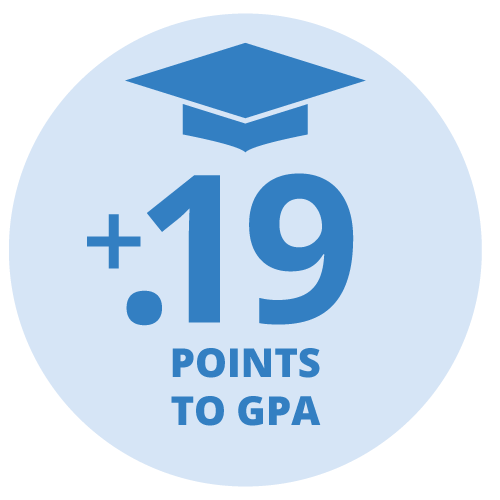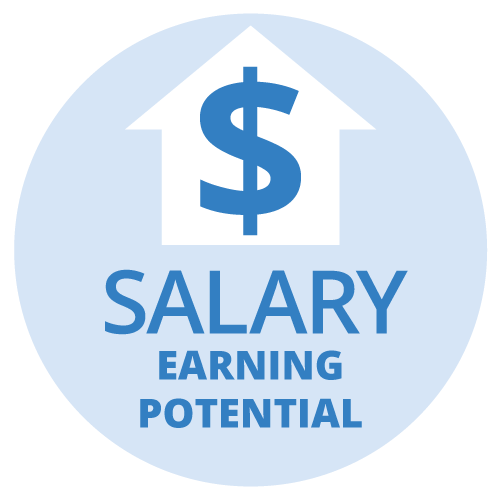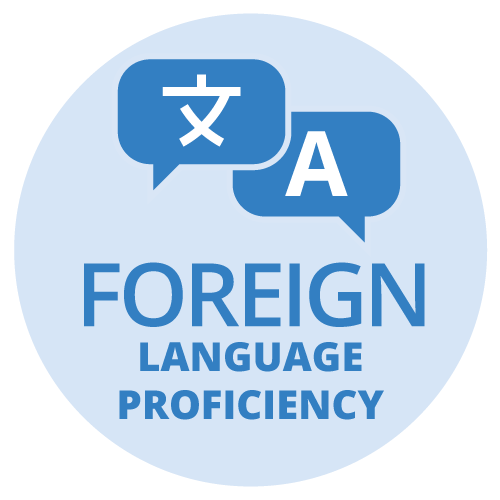Study abroad ROI
You’ll notice most students have a huge smile on their faces in the pictures they take overseas. That kind of happiness is more than just having fun on an international adventure: It’s the look on the face of someone who is enjoying what they’re learning about — in their class, in a new culture, and in the beginning stages of finding their path in life.
The average student who spends a term overseas sees many positive improvements compared to their peers. A well-rounded college education includes textbooks, lectures, and projects, but a study abroad term places the student in an environment to learn and perform life skills.
For example, everyone must know how to set a spending budget, plan their meals, and make travel plans to thrive in the future. When students study abroad, they practice those tangible skills while also learning how to navigate foreign cities, acclimate to a cross-cultural environments, and practice their language skills outside of the classroom. They also pick up the intangible, soft skill traits, such as having empathy for others, adapting to circumstances, and being open, patient, and considerate.
Studying abroad is the huge step for a student to learn how to balance their work and make strides in their personal life, so make studying abroad a conscious investment.
Below are a few stats about study abroad alumni, and how University Studies Abroad Consortium (USAC) has positioned itself to be an advantage to students.
Anticipated study abroad outcomes
Improve academic performance
 Increase GPA by .19 points*
Increase GPA by .19 points*
Compared to their peers, the average student added .19 points to their GPA at home after they returned from their study abroad program, according to a report by the Consortium for the Analysis of Student Success through International Education (CASSIE). That means study abroad students come back with more motivation and an improved skillset that helped them earn a 3.42 GPA; as opposed to the 3.23 GPA of other students.
 Achieve on-time graduation goal by 95%*
Achieve on-time graduation goal by 95%*
In a survey, most students who studied abroad graduated with their degree in six years. That is a strong contrast to a 62% graduation rate for those who only took American classes. You’re more likely to graduate when you get back to the U.S. if you take classes abroad.
*Information available as of 2022.
Enhance career potential
 Exercise the Top 2 core skills*
Exercise the Top 2 core skills*
Job candidates with certain core skills are more employable, according to the World Economic Forum’s Future of Jobs Report.
The top categories include:
- #1 Analytical thinking
- #2 Creative thinking
Students who travel abroad practice problem-solving skills to navigate transportation systems, read and interpret local rules, and other situations.
*Information available as of 2023.
 Increase in salary-earning potential*
Increase in salary-earning potential*
In a report global labor market consulting firm, Developing a Globally Competitive Workforce Through Study Abroad, employers associate certain soft skills as essential to becoming a good leader. For example, following the customary behaviors of a group, tuning into the mood of the room, and interpreting the circumstances are characteristics of a company president or chief executive. Salary compensation for those positions is generally the highest.
*Information available as of 2020.
 Practice foreign language proficiency
Practice foreign language proficiency
Constantly practicing a foreign language with their routine conversation helps students become fluent faster. It makes them effective communicators, both in life and business. Bilingual language proficiency is a skill set sought by employers when they do business with international services and suppliers.
Programs designed to be affordable
Tuition comparable to many in-state costs
USAC is a nonprofit organization focused on creating affordable international education experiences. For that reason, we design our programs so that the cost of a study abroad program is less than the average in-state tuition for many institutions nationwide.
Programs held in unique cities
USAC study abroad programs are designed to immerse students in local communities, away from expensive, tourist-heavy destination cities. Students can choose from meals that are made with the authentic touch of the local people. While airfare, housing, and meals are not included in most program fees, students save money while abroad by avoiding the expense of day-to-day life in popular locations.
Scholarships improve student access
USAC’s fundraising efforts nearly all contribute to enhancing scholarship opportunities for students. Our organization provides nearly $1.25 million in scholarships and discounts to study abroad. Award amounts range from $500-$5,000. Students may also be able to use financial aid to put toward their program. See Money Matters for details.
Resident directors provide expertise
Would it be easier if students had a helping hand? Yes. That’s why specialty programs and some partnership programs include one-on-one guidance from USAC staff members on-site overseas. They offer to take students on field trips, invite them to events, and engage with the regional culture. It is an exclusive bonus to help students immerse in the community. Not all programs offer a resident director. See programs for details.
Academic excellence
At USAC, we have been committed to providing high-quality academic programs since we were founded in 1982 by Boise State University and the University of Nevada, Reno. For over 40 years, we've focused on small class sizes, strong student-faculty relationships, and hands-on learning that goes beyond the classroom. Our students often say in course evaluations that USAC faculty are some of the best they’ve ever had.
As a non-profit organization, USAC is driven by our educational mission and values. Our course offerings are carefully managed by our experienced academic affairs team and overseen by our academic consortium. Our Affiliate Universities provide valuable guidance for curriculum development and partner with us on faculty-led programs, visiting professor opportunities, and curriculum integration initiatives.

Specialty Programs
USAC Specialty program courses are rigorous and follow the U.S. semester credit system, with 45 instructional hours per 3-credit course. Many of these courses also include local field trips or hands-on activities to enhance what students learn in the classroom. All Specialty program courses and instructors are carefully reviewed and approved by our U.S. accredited Schools of Record on a five-year cycle, and students evaluate each course every term. This process ensures that courses stay up-to-date and continue to meet our high standards.

Partnership Programs
USAC Partnership programs are based at international universities recognized as degree-granting institutions of higher education by the Ministry of Education or equivalent within their home country. Partnership programs allow direct enrollment in the host institution’s courses and therefore follow the educational system of the host country. Many Partnership university business schools hold AACSBaccreditation, and several Partnership engineering programs are recognized by ABET or an ABET Mutual Recognition Agreement. USAC also provides you with a grade and credit equivalency report to help you and your home university to understand how your courses abroad align with U.S. grade and credit standards.


